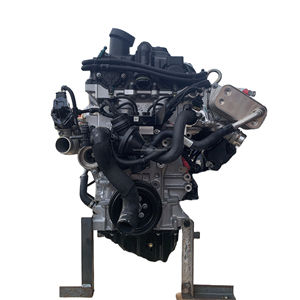Discovering the Inner Workings of a Compact Lorry's Engine System
As motorists, we usually take for approved the complex procedures that happen within the confines of our lorry's engine system. The small yet intricate machinery that propels us ahead is a wonder of design accuracy and sychronisation. From the regulated surges in the combustion chamber to the careful timing of fuel shot, every part plays a crucial duty in the smooth operation of the engine. In this expedition of a small vehicle's engine system, we will untangle the internal functions of this mechanical harmony, losing light on the enigmas that drive us ahead on our day-to-day journeys.
Burning Process Introduction
The combustion procedure in a small car's engine system is a crucial system that efficiently converts fuel into power to power the lorry. This process occurs within the burning chamber of the engine, where fuel and air mix, stir up, and generate controlled surges. The burning process consists of 4 primary stages: intake, compression, power, and exhaust.
During the intake phase, the piston moves downward, attracting a mixture of air and fuel into the burning chamber. The next phase, compression, involves the piston relocating upward, pressing the air-fuel mix to enhance its effectiveness. Subsequently, in the power stage, the ignition system sparks the pressed blend, resulting in a quick development of gases that compels the piston pull back. This downward movement generates the power required to drive the automobile. In the exhaust stage, the scorched gases are gotten rid of from the burning chamber via the exhaust shutoff, preparing the chamber for the following cycle. This cyclic burning process is basic to the procedure of a portable automobile's engine system, making certain reliable energy conversion for propulsion.
Piston and Cyndrical Tube Interaction

The piston's exact fit within the cylinder is vital for preserving ideal compression and preventing power loss throughout combustion. Tight clearances in between the piston and cylinder wall surfaces make certain efficient sealing, permitting the piston to move smoothly without allowing gases to leak past. Correct lubrication is also crucial to reduce rubbing and use between these components, improving long life and efficiency.
Additionally, the style and materials utilized in producing the piston and cyndrical tube influence engine effectiveness and sturdiness. Modern engines typically employ light-weight yet long lasting materials like light weight aluminum alloys for pistons and cylinder linings to reduce inertia and boost thermal performance. In general, the unified interaction in between the piston and cylinder is fundamental to the engine's capability and total efficiency.
Fuel Injection System Capability
Fuel injection systems in compact automobile engines play a critical function in specifically delivering gas to the burning chamber for regulated and efficient ignition. The fuel shot system works by injecting fuel right into click to find out more the combustion chamber at the a knockout post optimal moment during the engine's procedure (opel corsa engine). This specific timing ensures that the fuel blends uniformly with the air for proper burning, causing boosted fuel efficiency and lowered discharges
There are mainly two sorts of fuel shot systems used in small lorry engines: port gas injection (PFI) and straight fuel shot (DFI) PFI systems infuse gas into the consumption port prior to the consumption valve, while DFI systems inject fuel directly into the combustion chamber. Both systems have their advantages, with DFI providing far better fuel atomization and PFI providing an extra affordable remedy.
Comprehending Engine Air Conditioning Systems
Efficient operation of a portable automobile's engine depends heavily on the performance of its cooling mechanisms. The cooling system in a portable vehicle generally consists of numerous components functioning with each other to manage the engine temperature. Comprehending these engine air conditioning mechanisms is important for preserving the efficiency and durability of a compact vehicle's engine system.

Exhaust System Elements Explained
The ideal functioning of a compact automobile's engine cooling devices relies on a corresponding system called the exhaust system, which comprises various crucial components for making certain effective emissions and engine performance. The exhaust system includes elements such as the exhaust manifold, catalytic converter, muffler, and tailpipe. The exhaust manifold collects exhaust gases from the engine's cyndrical tubes and routes them to the catalytic converter. The catalytic converter then transforms hazardous contaminants in the exhaust into less hazardous emissions before releasing them via the muffler and tailpipe.
One essential element of the exhaust system is the oxygen sensor, which keeps track of the oxygen levels in the exhaust gases to assist control gas intake and ensure optimal engine performance. opel corsa engine. Additionally, the resonator might exist in some exhaust systems to lower sound article source degrees. Generally, the exhaust system plays an essential duty in keeping engine effectiveness, lowering dangerous discharges, and making certain a quieter driving experience for portable lorry proprietors

Final Thought
To conclude, the compact automobile's engine system is an intricate combination of parts that function together to promote the combustion process, transform fuel into power, and get rid of waste gases. Comprehending the internal operations of the engine system, consisting of the piston and cylinder communication, fuel injection system, engine air conditioning systems, and exhaust system components, is important for keeping ideal performance and efficiency of the automobile.
The combustion procedure in a portable automobile's engine system is a critical mechanism that successfully converts fuel right into energy to power the automobile.Fuel injection systems in small lorry engines play an essential duty in specifically providing gas to the burning chamber for effective and controlled ignition.There are mostly 2 kinds of gas injection systems utilized in portable car engines: port fuel injection (PFI) and direct fuel shot (DFI) Understanding these engine air conditioning devices is essential for preserving the efficiency and durability of a portable lorry's engine system.
The optimal functioning of a small vehicle's engine air conditioning devices depends on a complementary system recognized as the exhaust system, which comprises numerous necessary elements for ensuring reliable emissions and engine efficiency.
Comments on “Opel Corsa Engine: Efficiency and Dependability for Your Car”